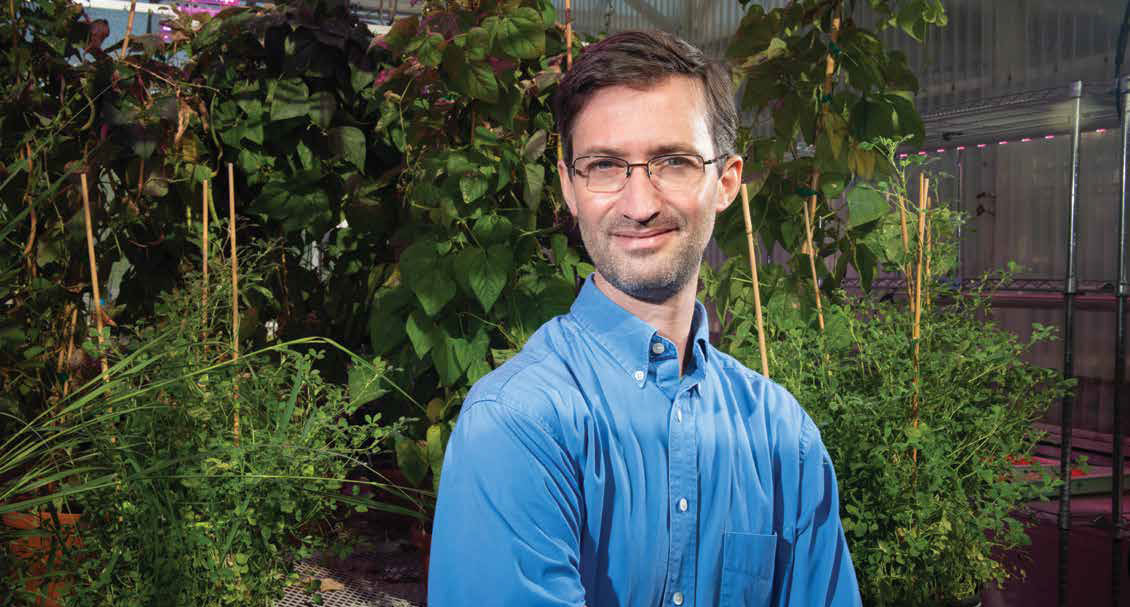
The Libault Lab
Exploring Crop Response to Environmental Stresses at the Single Cell Level

Plant biologists are, among others, interested in understanding how a plant grows, how a plant adapts to its environment, the molecular mechanisms within the plant and the biochemical mechanisms of the plant, according to Marc Libault, associate professor and plant biologist in the Department of Agronomy and Horticulture at the University of Nebraska–Lincoln.
Libault’s research primarily focuses on characterizing the molecular response of plant cells to environmental stress. Specifically, the Plant Single Cell Laboratory at the university, directed by Libault, studies how each plant cell responds to environmental stressors, such as drought, microbes (bacteria, fungi, viruses, etc.), or nitrogen deprivation. The lab uses innovative plant single cell approaches to investigate the plant response to these stressors.
The Libault Lab
The Libault Lab has two goals: 1) to understand plant interaction with its environment, including how plants and microbes work together, and 2) to understand how the plant genomic DNA molecule is used by the plant cells in order to adapt to various stresses. Libault’s Lab offers a learning opportunity to those interested in plant cellular and molecular biology.
“One of the strongest interests in my lab is learning how plant root cells are interacting and working with microbes,” Libault said.
Libault’s work is primarily focused on legumes, such as soybeans, that are intensively grown in Nebraska. His lab specifically looks at soybean roots and how they interact with one type of soil bacteria – rhizobia. Libault referred to this process as symbiosis, or rather how the plant and rhizobia work together for the benefit of both the plant and the microbes.
“My lab is strongly interested in the symbiotic relationship and communication that exist between legumes (one example being soybeans) and atmospheric nitrogen-fixing microbes (one example being rhizobia) to benefit both partners,” Libault said.
Other crops such as corn, maize and wheat cannot perform this kind of symbiosis. As such, they are completely dependent on the application of nitrogen fertilizers. Therefore, one of Libault’s long-term objectives is to transfer his research in the lab on legumes to the non-legume crops to minimize application of nitrogen fertilizer, enhance sustainable agriculture, and improve the overall crop growth.
Due to his innovative single cell approach, Libault’s research may eventually reduce the need for costly nitrogen fertilizers and enhance sustainable agricultural practices.
Overuse of fertilizers can pollute water due to runoff into lakes, rivers and streams. Libault said this pollution also impacts fish and wildlife that depend on these water sources for survival. Understanding the relationship between the plant and soil and the changes that may be required to reduce the need for nitrogen fertilizer use is what Libault researches most.

Drought Changing Plant Growth
Drought conditions have been one area of inquiry of Libault’s team.
“Each plant species has a different level of tolerance to drought stress,” Libault said.
For example, he said that sorghum is naturally more tolerant to drought conditions than corn. His team studies the molecular mechanisms activated in response to drought stress that various plants can withstand. He stressed the importance of knowing the unique molecular processes used by different plant species to tolerate drought.
“We apply the same kind of strategy, the single cell genomic approach, to various plants to understand how each cell in the plant adapts to the drought,” Libault said.
This knowledge also has an impact on the environment.
Libault said the way a plant responds to drought also depends on its interaction with soil living organisms such as microbes. As such, his team tests the communication existing between the plant root and the soil microbial community.
Modification of Plant DNA
Libault said there might be long-term consequences if new strategies in food production are not developed. At times, these strategies require a modification in the plant genomic DNA. For instance, Libault said the genome (set of genes or genetic material) of plants that are sensitive to drought conditions may need to be modified to enhance plant growth without draining the water resource.
“If we can naturally engineer the genome of plants to be more resistant to environmental stresses, we have a way to improve the resistance of the plants to those stresses,” Libault said. “Doing so would likely maximize the yield for the farmer and require less use of resources, such as water, fertilizers, pesticides.”
Sharing Findings
Libault stressed the importance of sharing research findings with multiple groups.
“Right now my lab is more focused on developing fundamental knowledge of plant cell biology. There will be a need for the transfer of this information to application to industry,” Libault said.
He recently created new tools such as single cell approaches for the scientific community to better understand plant cell biology. He also works to enhance the understanding in the interaction between plants and microbes.